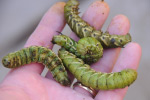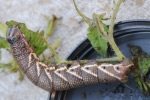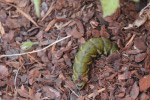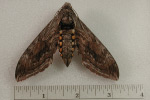Photo Gallery of Vegetable Problems
Eggplant
(Click on photo to enlarge)
General Disease Management in Eggplant
Pepper & Eggplant Disease Guide - A Practical Guide for Seedsmen, Growers and Agricultural Advisors. Published by Seminis Vegetable Seeds, Inc.’s Plant Health Department.
Diseases
Disease: Curly top
Pathogen: Various strains of Beet curly top virus (BCTV), which are vectored by the beet leafhopper (Circulifer tenellus)
Host crops: Numerous plant species including many vegetables such as bean, beet, carrot, eggplant, coriander, pepper, potato, tomato, various cucurbits such as squash, cucumber, pumpkin, watermelon, etc.
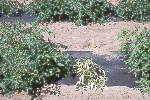 |
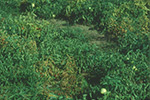 |
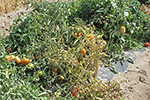 |
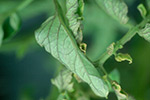 |
| Symptoms of curly top on tomato leaves. | |||
| Photo Source: E. J. Sorensen | Photo Source: Phil Hamm, Oregon State University | ||
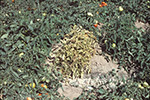 |
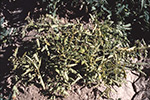 |
| Symptoms of curly top on tomato leaves. | |
| Photo Source: Krishna Mohan, University of Idaho | |
On-Line Resources:
Pacific Northwest Plant Disease Management Handbook: Bean, All (Phaseolus vulgaris) – Curly Top
Disease: Verticillium wilt
Pathogen: Verticillium species
Host crops: Numerous vegetables including many brassica vegetables (but not broccoli), cucumber, eggplant, pepper, potato, pumpkin, radish, spinach, tomato, watermelon, etc.
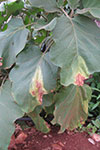 |
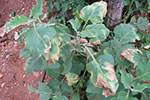 |
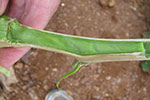 |
| Light brown vascular discoloration in the stem of an eggplant infected with Verticillium dahliae. | ||
| Photo Source: Lindsey du Toit | ||
On-Line Resources:
Fusarium and Verticillium Wilts of Tomato, Potato, Pepper, and Eggplant. . The Ohio State University Extension.
See Diseases, pests, and other problems common to many vegetables: Verticillium wilt.
Insect/Mite Pests
Common name: Spittlebug, (e.g., meadow spittlebug)
Latin binomial: Meadow spittlebug = Philaenus spumarius
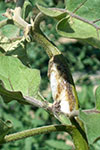 |
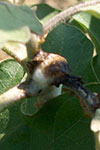 |
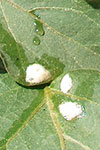 |
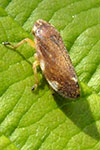 |
| Photo Source: Eric Sorensen | Photo Source: Cheryl Moorehead, individual, Bugwood.org | ||
On-Line Resources:
Strawberry Pests. Pacific Northwest Insect Management Handbook. Chapter: Small Fruit, Section: Strawberry.
Seasonal development and life cycle – Spittlebugs. UC IPM Online. University of California.
Meadow spittlebug. Pacific Northwest Insect Management Handbook.
Common name (of damaging stage): Tomato hornworm
Latin binomial: Manduca quinquemaculata
Host crops: Pepper, eggplant, potato, and tomato.
On-Line Resources:
Pacific Northwest Insect Management Handbook. Washington State Chapter: Vegetables, Section: Tomato Part2: Fleabeetle to Wireworm.
Vegetables: Tomato: Tomato hornworm. Washington State University Hortsense.
UC Pest Management Guidelines: Eggplant Hornworms. UC IPM Online, University of California.
Our pages provide links to external sites for the convenience of users. WSU Extension does not manage these external sites, nor does Extension review, control, or take responsibility for the content of these sites. These external sites do not implicitly or explicitly represent official positions and policies of WSU Extension.

